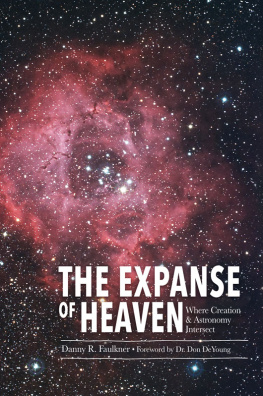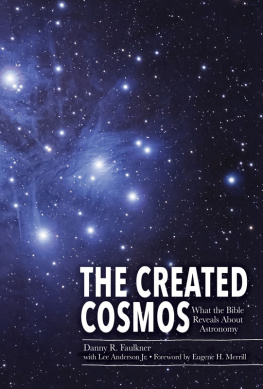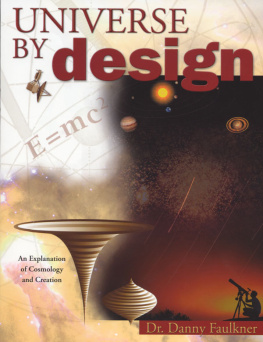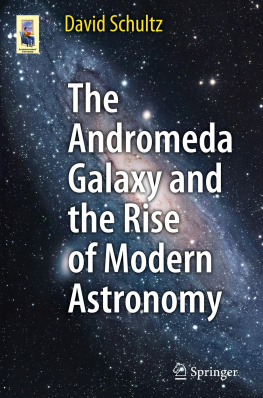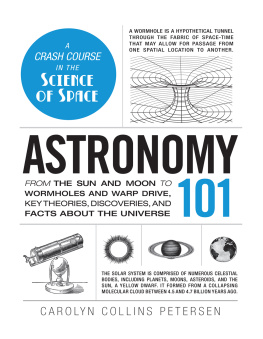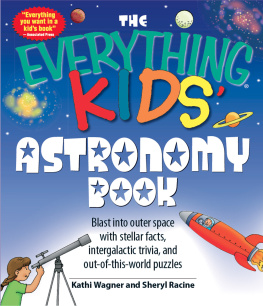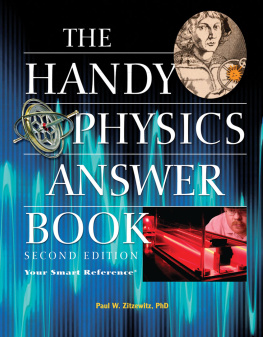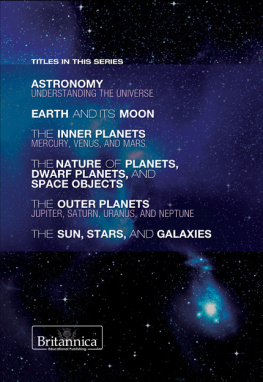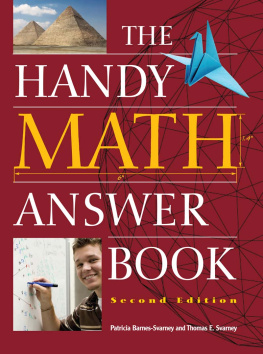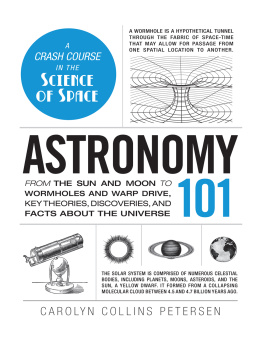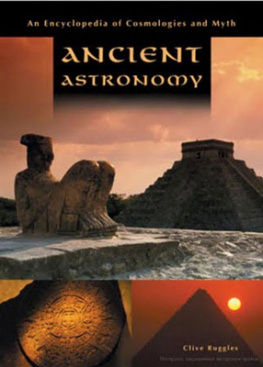First printing: October 2017
Copyright 2017 by Danny R. Faulkner. All rights reserved. No portion of this book may be reprinted, stored in a retrieval system, or reproduced without the express written permission of the authors and the publisher, except in the case of brief quotations in articles, reviews, and educational materials. For information write:
Master Books, P.O. Box 726, Green Forest, AR 72638
Master Books is a division of the New Leaf Publishing Group, Inc.
ISBN: 978-1-68344-098-7
ISBN: 978-1-61458-633-3 (digital)
Library of Congress Number: 2017953955
Front and back cover photograph by Glen Fountain, Ex Nihilo Observatory. Used by permission.
Scripture quotations, unless otherwise noted, are taken from The Holy Bible, English Standard Version, copyright 2001 by Crossway Bibles, a division of Good News Publishers. Used by permission. All rights reserved.
Scripture quotations so noted are taken from the New King James Version. Copyright 1982 by Thomas Nelson. Used by permission. All rights reserved.
Please consider requesting that a copy of this volume
be purchased by your local library system.
Printed in the United States of America
Please visit our website for other great titles:
www.masterbooks.com
For information regarding author interviews,
please contact the publicity department at (870) 438-5288.
To my good friend and research partner for two decades,
Ron Samec.
Ron, your iron has sharpened my iron.
Contents
Foreword
Astronomy questions continue to generate popular interest in the media: Is there alien life on the thousands of planets circling distant stars? Are we in imminent danger of an earth collision with a wandering asteroid or comet? Could the sun suddenly misbehave and thrust the earth into either a frozen or scorched future?
In contrast to these doubtful questions, positive refreshment is found in the biblical creation worldview of history and the future. Author Danny Faulkner provides such details in this astronomy summary with an expertise ranging from ancient cosmologies to gravity waves. The Creators fingerprint is clearly evident throughout astronomy including the laws of nature. These laws describe gravity, conservation of energy, celestial mechanics and much more. The laws are unchanging and established for our survival and well-being. Physics and astronomy texts describe these laws but cannot explain their ultimate origin which lies in the realm of supernatural creation.
The field of astronomy is overwhelming to many of us. Our minds may glaze over when we consider light-year distances, vast spiral galaxies, and stars as numerous as the sand grains on all the seashores of the world. Author Danny Faulkner has a special ability for giving clear explanations of such details in his teaching and writing.
I am honored to serve with author Danny Faulkner on the board of directors of the Creation Research Society. This International Society has promoted creation studies including astronomy for over five decades. This new book adds to our mission of promoting quality biblical science.
DON DEYOUNG, PRESIDENT
CREATION RESEARCH SOCIETY
May 1, 2017
Acknowledgments
As I finished the final edits of The Created Cosmos: What the Bible Reveals About Astronomy in the spring of 2016, I realized the need for this companion book. Once again, I rounded up the usual gang of suspects. Since Lee Anderson was so valuable in completing the earlier book, I knew that he would be most helpful in writing this one. Lee once again helped organize the material and acted as my editor. This new book required many more figures and illustrations than the previous book did; and Lee suggested many of the ones that we needed, secured the illustrations, and kept track of them during the editing and preparation stages. As before, I called upon my friend and astronomy colleague, Robert Hill, to review the manuscripts content. Bob, too, recommended many figures and illustrations included in this book. Once again, Steve Golden proofread the text. Im amazed that the many little things that we missedbut these didnt get past Steve. This book is far better than it would have been without the tremendous help of these three gentlemen. I also want to thank my department director at Answers in Genesis, Andrew Snelling, for his support for this project. Being a geologist, Andrew also read the chapter on the planet earth, and he made many good recommendations for changes. Also, as before, I wish to thank Laurel Hemmings for her masterful work on the layout of this book.
I especially thank Don DeYoung, President of the Creation Research Society, for kindly agreeing to write the foreword. Don has written multiple works on creation and astronomy, such as Astronomy and the Bible: Questions and Answers and, along with John Whitcomb, Our Created Moon: Earths Fascinating Neighbor. Ive known Don for 25 years, and it has been my pleasure to serve with him on the board of directors of the Creation Research Society for more than a decade.
Finally, I thank my loving wife, Lynette, for her encouragement in completing this book.
DANNY R FAULKNER
April 11, 2017
Introduction
I intend this book as a companion to The Created Cosmos: What the Bible Reveals about Astronomy. In the introduction to that book, I noted how it was different from other books about astronomy written by biblical creationists in recent years by comparing the difference between biblical theology and systematic theology. I likened the approach taken in The Created Cosmos to the approach of biblical theology, because in it I explored what the Bible had to say about astronomy, using the categories that the text itself presents, and discussing topics in terms of how the original readers of Scripture would have understood them. (I also included a discussion of a few particularly relevant things that the Bible doesnt say about astronomy.) A few people may have been frustrated with that book. There are two possible reasons for this frustration. One reason is that The Created Cosmos was not explicitly oriented toward recent, six-day creation. Recent creation was discussed, or otherwise there would have been no point in including the chapter on the light travel time problem. Other than that, though, many of the chapters did not address the age of creation at all. However, keep in mind that the direct context of most of the biblical passages discussed in that book did not specifically address the age of creation, so it would have been out of place to introduce age.
The present book is more of a systematic treatment. Its purpose is to discuss astronomy, using scientific categories, in the light of Scripture. Since I clearly see the Bible as teaching that God created the world in only six days, and that the creation was only thousands of years ago, this will be an underlying assumption in this book. I will describe various aspects of astronomy as it relates to that understanding. This is sure to satisfy anyone who may have been disappointed by what they might have perceived as a lack of sufficient attention to recent, six-day creation in The Created Cosmos.
The second reason some people may have been frustrated with The Created Cosmos was the many astronomical topics that it omitted. This present book contains far more astronomy than The Created Cosmos did. However, it is not meant to be exhaustive. Inevitably, some interesting astronomical topics will not be discussed. I endeavored to include material relevant to the biblical creation model of astronomy. Many astronomical topics may be of interest, but they may not have any relevance to biblical creation. As such, this book is not intended as a textbook on astronomy, though it could be so used, and it certainly could be used as a supplement for a course on astronomy.

